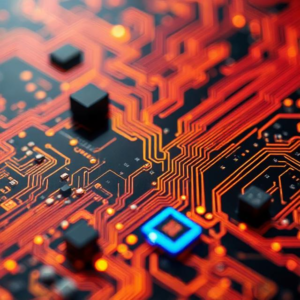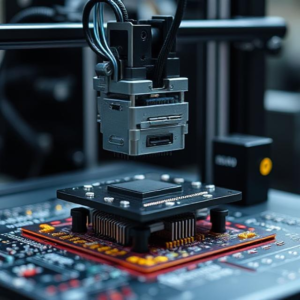1. Printed Electronics
Printed Electronics is the process of using printing techniques to create electrical components and circuits. Just like you print on paper with a printer, we can print electronic circuits, but instead of ink, we use special materials (like conductive ink) that allow electricity to flow.
- How It Works: Imagine printing a circuit on a piece of plastic, paper, or even fabric. The printed materials could be things like conductive inks or polymers that help create things like sensors, solar panels, and even flexible screens.
- Why It’s Cool:
- Cost-Effective: Printing is cheaper than traditional manufacturing methods like etching on silicon chips.
- Fast: It can be quicker than traditional methods.
- Lightweight and Thin: The products are often much lighter and thinner.
- Uses:
- Smart Packaging: Labels that can light up or change color when scanned.
- Wearable Technology: Like fitness trackers that are flexible.
- Flexible Displays: Screens that can bend or fold (like bendable phones).

2. Flexible Electronics
Flexible Electronics refers to electronic devices or components that can bend, stretch, or twist without breaking. This is different from traditional electronics, which are rigid (like most smartphones or TVs).
- How It Works: Flexible electronics use materials like plastic, thin metals, or special polymers that are bendable but still allow electrical current to flow. These materials can be used in things like flexible batteries, displays, or sensors.
- Why It’s Cool:
- Bendable: Devices can be made to bend or twist without breaking, which is great for new kinds of gadgets.
- Wearable: Since it’s flexible, it can be worn on clothing or as part of a bracelet, for example.
- Durable: It can be more durable because it doesn’t break easily like traditional glass or metal components.
- Uses:
- Wearable Tech: Clothes or accessories that can track health, fitness, or even display information.
- Foldable Phones/Tablets: Devices with screens that can bend or fold without cracking.
- Solar Panels: Flexible solar panels that can be rolled up or placed on curved surfaces, like tents or backpacks.
How They Are Connected:
- Printed Electronics is one technique used to make Flexible Electronics. So, printed electronics can be used to make the circuits and components that go inside flexible devices.
- Both are part of the new generation of technology that’s pushing towards more lightweight, compact, and bending gadgets.
Example in Simple Terms:
Imagine you have a smart band (like a fitness tracker). It’s made using flexible electronics because it can bend and move with your wrist. The printed electronics inside the band are used to create the circuits that allow the band to track your heart rate, steps, and other activities.











